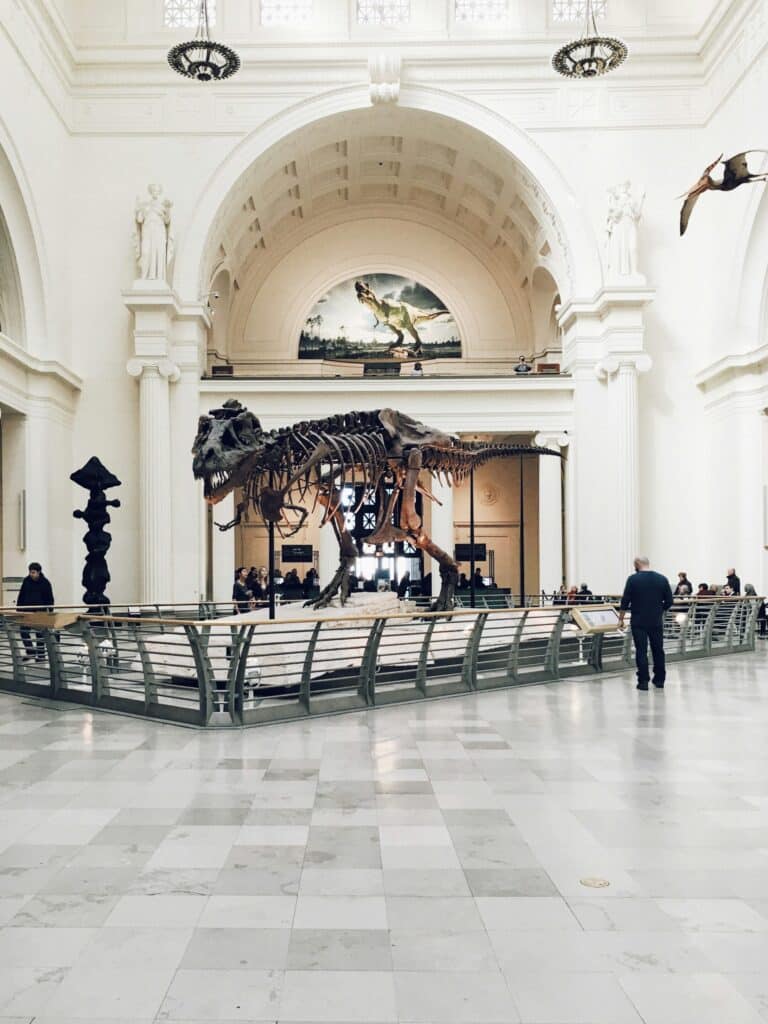Museums are information hubs. The challenge? Creating experiences that captivate, inspire, and leave a lasting impression.
Entire generations are growing accustomed to seeking information online.
Digital signage, however, is bringing a modern touch to museums, transforming a traditional space with cutting-edge technology. From interactive exhibits to dynamic wayfinding, its potential is truly endless.
1. Welcome messaging
Popular museums welcome hundreds, sometimes thousands, of visitors daily, making admissions a challenge. Long queues, diverse languages, and large groups add to the complexity, requiring efficient solutions to keep things running smoothly.
Displaying welcome messaging on digital signage screens is an effective way to communicate information such as admission prices and opening hours. There is no better time to promote particular exhibitions than when visitors are waiting in line. Importantly, screens can display content in multiple languages also, which is essential when it comes to notices about health and safety.
2. Exhibition video and images
Museum digital signage can be the perfect companion to an exhibition. Often, the most effective exhibitions are those that combine multiple creative mediums to educate and inform. Today, video is, without a doubt, our favourite way to consume content.
Implementing screens or even video walls is an engaging way to support a museum display. Younger visitors would likely much rather watch a short, engaging video on a subject than read a wall of information. Our brains also process visual information 60,000 times faster than text, so a slideshow of images, videos, or even animation is significantly more engaging and impactful than static posters.
3. Interactive learning
Many of us learn best through a hands-on approach. Interactive learning is hugely important for museums, again, especially with younger audiences like those coming on school visits. Digital signage for museums is unparalleled in this function.
Most museums implement some kind of visitor pass. Combining this with RFID tag technology enables visitors to interact with exhibition screens. RFID tags work to trigger content on a screen, allowing presentations to reload/start for new visitors.
QR codes can also suit the needs of a technology-driven museum. QR codes allow visitors (through their phone camera) to capture content from a screen. Instead of trying to take a picture of the information on an exhibition (or take notes on a school trip), visitors can download content that they can access later.
Finally, many museums are deploying screens with integrated cameras to entertain audiences. Taking photos of exhibitions has been popular since the advent of the camera.
Digital signage for museums opens up countless possibilities on this front. Filters on a screen allow visitors to pose, for example, in period dress. A natural history museum might invite visitors to pose with dinosaurs and so on. Digital signage for heritage exhibits can also help to increase interest. Installing a camera feature at an exhibition helps to create a buzz and gives people a great memento to go home with.
4. Wayfinding assistance
Museum digital signage can serve an important wayfinding function. Getting lost in a museum or not being able to find the exhibition you came to see can detract from a visitor’s experience. A network of screens can be used to offer directions to different exhibitions, this is particularly valuable for sites spanning multiple floors. Digital signage further helps with crowd control as flows can be controlled by changing where screens direct visitors. Touchscreen wayfinding kiosks can even add a search function where users can receive tailored directions to the exhibits they wish to see.
5. Visitor analytics
Further linking to the previously mentioned interactive qualities of digital signage for museums is visitor analytics. Recording admission numbers is a high priority for museums. Beyond counting visitors at the entrance, measuring engagement and gathering meaningful data has traditionally been a challenge.
With RFID-enabled visitor passes, museums can track footfalls across different areas and monitor engagement with specific exhibits. This data is invaluable for consistently enhancing the visitor experience and optimising museum layouts for maximum efficacy.

What is digital signage?
What is digital signage? Digital signage refers to the use of digital displays to replace physical signs. Modern displays can create immersive experiences by delivering dynamic content. You can use digital signs to engage patrons, provide information about exhibits or even offer directions to help people navigate your museum.
Why you need great digital signage hardware and software
Digital signage software powers displays and touchscreens. You need high-quality software to manage the content for your displays, create engaging visuals and provide an interactive experience for museum guests. The best solutions make content management easy and provide a platform to create and use visual assets easily.
Digital signage hardware is equally important. Your hardware offers dynamic experiences that enhance your exhibits. For example, you could install touchscreen signs on the walls of a gallery to deliver interactive educational content. High-quality touchscreens and displays ensure that your visual assets resonate with visitors.
How gallery digital signage benefits museums
You can use digital signs in many ways.
Boost exhibit engagement
Digital signs are great tools for creating immersive exhibits. You can share educational information about a gallery, inform patrons about the history behind a piece of art or generate buzz about upcoming free events and important days on the monthly museum calendar.
Simplify gallery management
Gallery digital signage does more than enhance exhibits and engage patrons. These signs are also great tools for event management.
For instance, you can use digital signs to notify guests about important start times during free events, encourage them to check out unique art pieces that are on display for a limited number of days and provide detailed information about an exhibit.
Provide dynamic experiences
Paper signs and pamphlets don’t engage or immerse patrons as well as digital media does. Every time someone looks down to read a pamphlet, they are taken out of the moment.
Digital signs allow you to seamlessly combine dynamic media with timeless art. You can create immersive educational experiences that integrate media with displays and galleries to provide a truly unforgettable educational experience.
Simplify the patron journey
Modern signage simplifies the visitor journey, especially during big events and high-volume days. Immersive signage helps visitors find their way around your building, which means they can spend more of their time enjoying all of your exhibits.
Discover our digital signage solutions
Are you ready to enhance the patron journey? Our experts at TrouDigital are ready to help you unlock the power of digital signage for your museum.
Visit our Features page.
Why not get in touch to find out more?
Call – 02380 981110 or Email Us – info@troudigital.com
